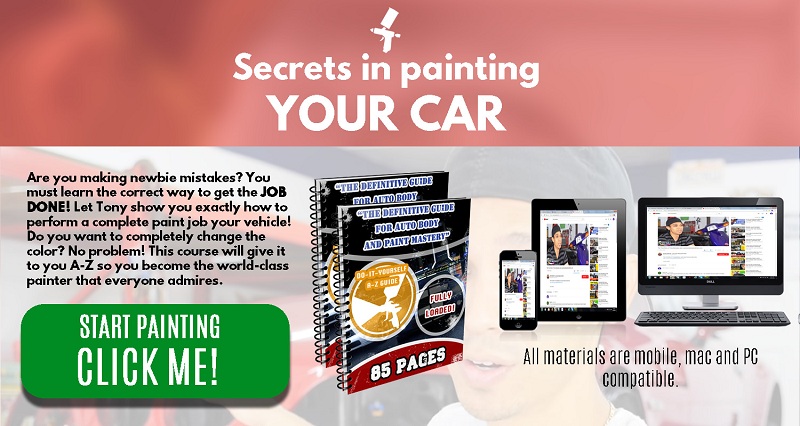Hey, it’s Tony from LearnAutoBodyAndPaint. Today’s video is all about Sand to Bare Metal or Not?
I got this question from the forum, so I decided to make a video about it answering this burning question on auto body.
For those of you who haven’t signed up, join our FREE Forum at the pub.learnautobodyandpaint.com. It’s a free community that we just started recently.
Before we go ahead and answer this question, please know that this is what I recommend doing, from my years of experience in this industry. There will be others who would recommend a different strategy, but this is how I have been doing it to get pro results.
Let me share with you my screen where I show you the forum with the question posted by our member, Ryan.
“It seems everyone on the internet flippantly says “take it down to bare metal” but man…that’s a lot of work and you lose a lot of the bodywork/smoothing that’s already there. So I’m curious what you guys think. In all his video @TonyB just 400s the old paint in smooth areas and deals with the dents separately. This is a ton easier than taking everything off but those cars appear to have OEM paint.
So, here is my situation. This car has been repainted at some point, probably 10 years ago. The body is super straight with only a few little dings I will fill. On the roof there are rust bubbles and when I sanded that area down it looks like they took off the OEM paint prior to painting. So my plan here is to sand this to metal for sure, grind out all the rust (it’s really light), fill any issues, epoxy prime, and go from there. The rest of the car has zero rust issues but the clear coat is failing on pretty much every panel where it was exposed to the sun. I sanded down a panel and I can see that the OEM finish is still underneath (I see clear/base/primer/clear/base/primer).
I should also state my expectation. I want to do my first paint job right but it also doesn’t need to last 50 years either. If I got a good 5-10 years out of it that would seem like a good result to me.
I have zero experience here but it seems to me I have a few options:
Scuff the clear, epoxy prime, bodywork, etc.
Sand down to the OEM clear, epoxy prime, bodywork, etc.
Sand to metal, epoxy prime, bodywork, etc.
To me, it seems like the second option of sanding down to the OEM clear/base makes the most sense, but looking for some advice here. I’m trying to avoid this turning into a never ending project. I know my first paintjob won’t be perfect.”
Here’s what I would do. I would put some 400-grit on a DA and sand everything down smooth. It’s highly recommended to prime all of those areas that you’re feathering in. You can even speed up the process by using a 360-grit or 320-grit sandpaper.
You don’t even have to use an epoxy. You can use a 2K high build filler primer and cover all those areas really well.
Once your car is fully sanded, you won’t worry about overspray or tape lines because if the overspray gets on other parts of the car, it’s already sanded. You just need to wash everything down with 400-grit then block it and get it nice and smooth.
If you need to do some glazing, go ahead and do so. And then, you’re all good.
This is Tony from LearnAutoBodyAndPaint. I hope today’s tip was very helpful for your own car projects. Grab your FREE 85-Page Auto Body And Paint Manual and get a lot more information.
Check out the LearnAutoBodyAndPaint VIP Program and get a more comprehensive course that will absolutely help you get pro results.
Please Like, Share and Subscribe to my videos. Cheers and Talk soon!
Tony

Other Helpful Links:
Live Auto Bodywork Straight Sanding and Blocking
Block-Sanding Body Filler and DIY Auto Body Talk (Sanding Body Filler on Plastic Bumper)
Wet Sand & Dry Sanding Techniques When Prepping for Base Coat Painting
Final Sanding HACKS – 2K Prime, Glaze Putty, Dry/Wet Sand, Clean and Prep for Paint!
